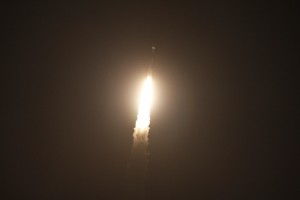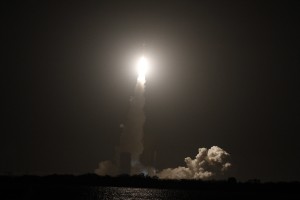At 10:44 p.m., the MMS mission launched from Cape Canaveral Air Force Station, mounted to an Atlas V rocket.
The Magnetospheric Multiscale mission, or MMS for short, involves four spacecraft that will study the magnetic fields around Earth, and how they connect and disconnect, according to NASA.
 “The MMS is really going to be a vital tool,” said Dr. Jeff Newmark, a solar physics scientist.
“The MMS is really going to be a vital tool,” said Dr. Jeff Newmark, a solar physics scientist.
The technology involved in the MMS is going to be 100 times faster at studying these magnetic fields than anything launched before, according to Newmark.
The four spacecraft, that operate in unison, will record up to 30 events a second, and create a three dimensional image of these magnetic fields, according to John Dorelli, a computational physicist with NASA.
“We’re collecting so much data, we’ll only be able to send about two percent back to Earth,” Newmark said.
The MMS mission involves 100 sensors to capture data, 25 on each spacecraft, according to Dorelli.
 Recording magnetic fields requires preventing interference while operating, and that takes additional measures in every aspect of the mission. Even the fuel venting procedure had to be modified, according to Justin Treptow with NASA’s Launch Services Program.
Recording magnetic fields requires preventing interference while operating, and that takes additional measures in every aspect of the mission. Even the fuel venting procedure had to be modified, according to Justin Treptow with NASA’s Launch Services Program.
“There is a long period of time to calibrate the instruments after launch. It will be months until we have science quality data,” Dorelli said.
The mission will run for at least 2 years, and will record upwards of 100 major events, according to Newmark.
By studying these magnetic reconnections in Earth’s atmosphere, NASA hopes to understand reconnections elsewhere in space, such as at the boundary of our solar system, according to the MMS mission statement.




